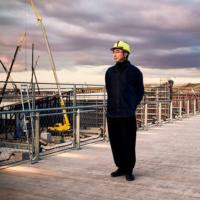The major earthquake that hit the Noto Peninsula in Ishikawa Prefecture on Sunday serves as a reminder that a large earthquake can happen anytime, anywhere in Japan. The magnitude-6.9 quake with a seismic intensity of up to 6-plus on the Japanese scale of 7 happened at 9:42 a.m., killing one person, injuring about 210 people and flattening or damaging about 790 houses.
It was caused by an active fault lying below the sea floor, which formed as a result of overall strain caused by oceanic and continental tectonic plates pushing against each other. The seismic center was not located in an area considered quake-prone -- about 30 km northwest of the central part of the city of Wajima and about 11 km below the sea floor. A fault about 21 km long and about 14 km wide shifted an estimated 1.4 meters.
The recent history of earthquakes, including the 1995 Kobe earthquake, the 2004 Niigata earthquake and now the Noto earthquake, shows that Japan has entered a period when large quakes are likely nationwide. It is urgent that the central and local governments strengthen measures to help citizens make their residences quake-resistant. Individual citizens should affix furniture to walls to prevent pieces from toppling over.
















With your current subscription plan you can comment on stories. However, before writing your first comment, please create a display name in the Profile section of your subscriber account page.